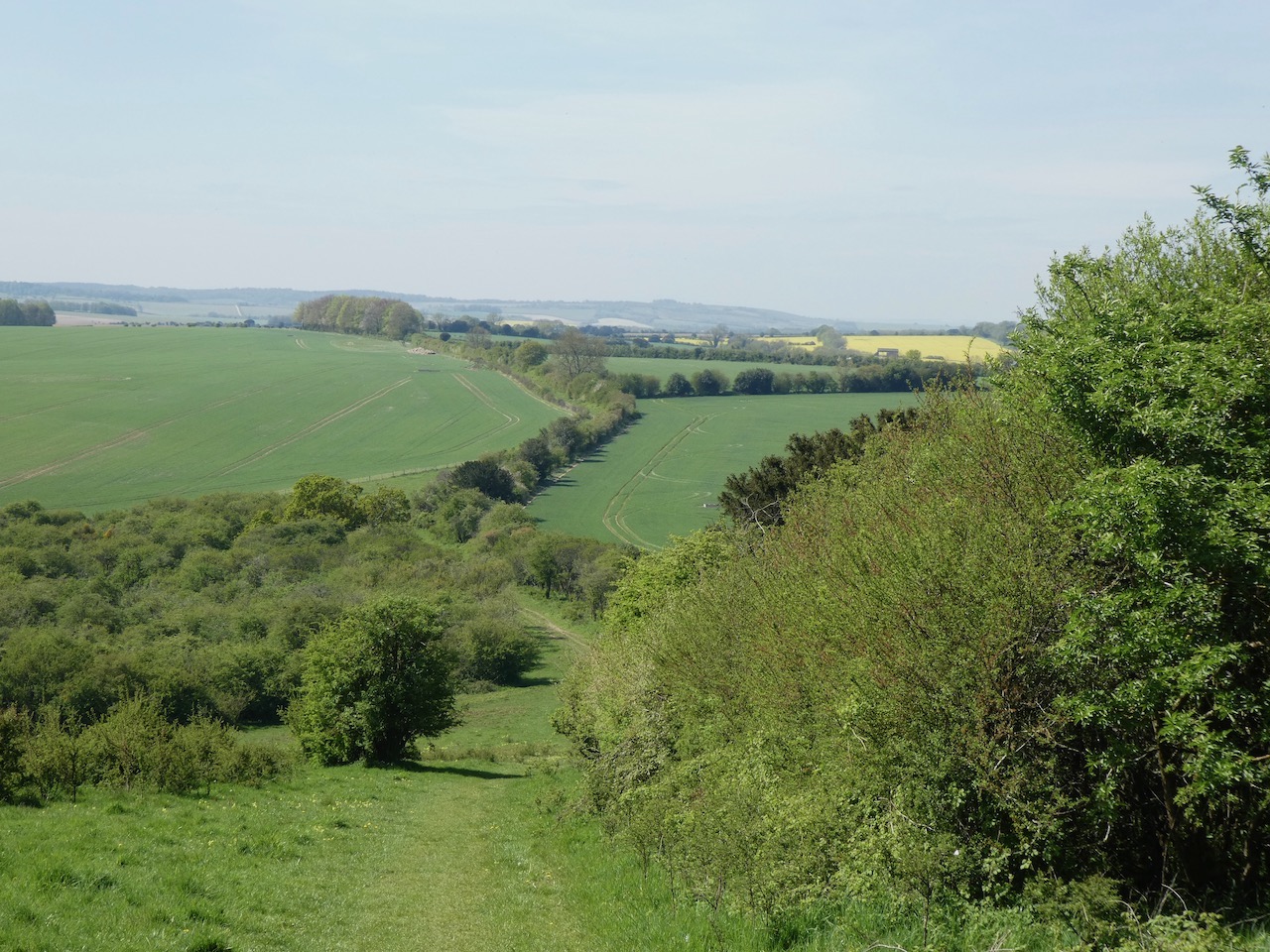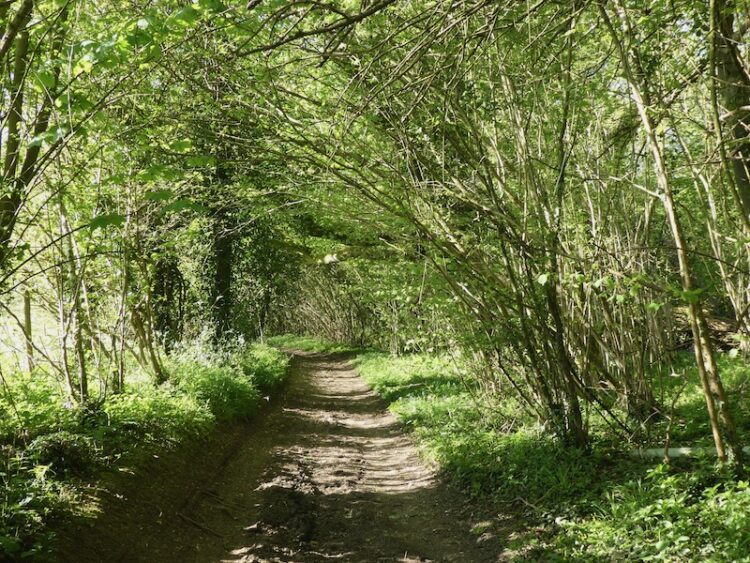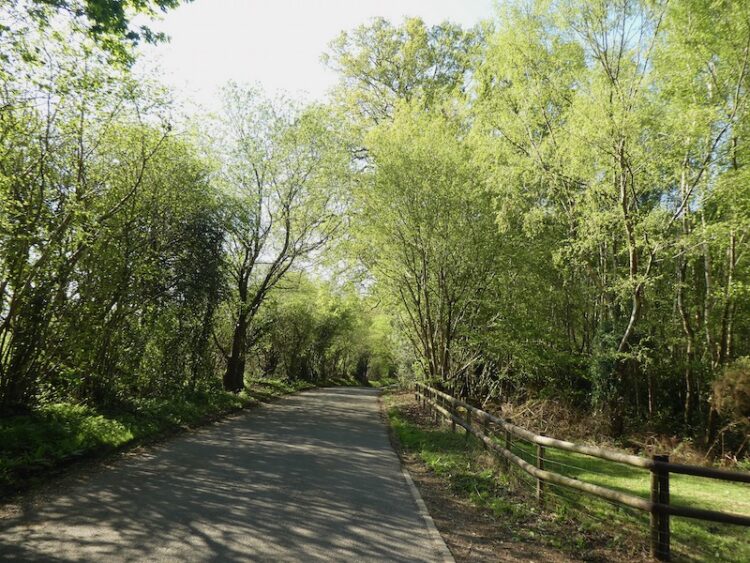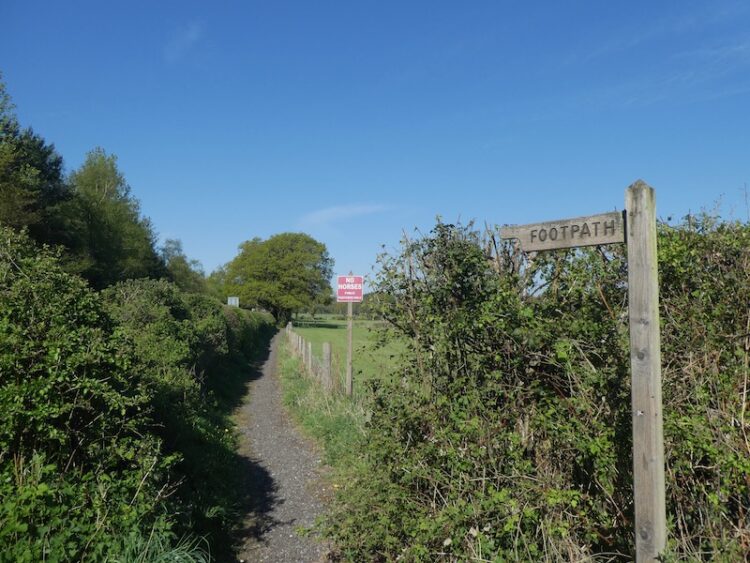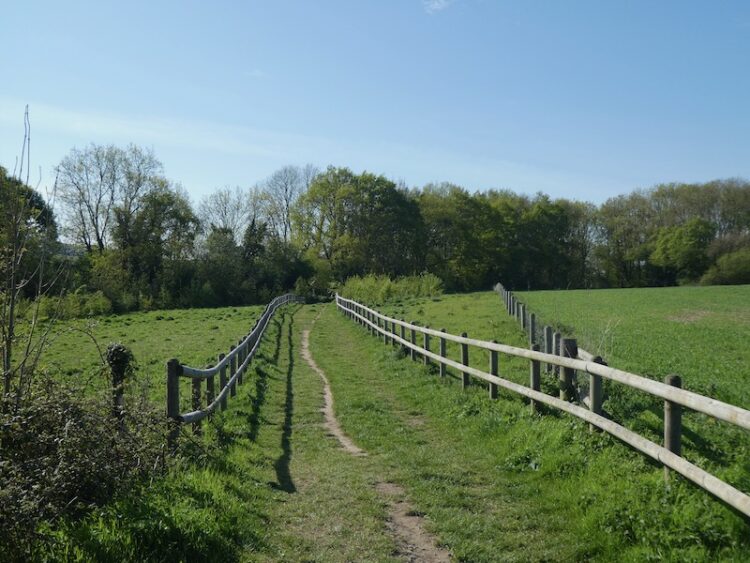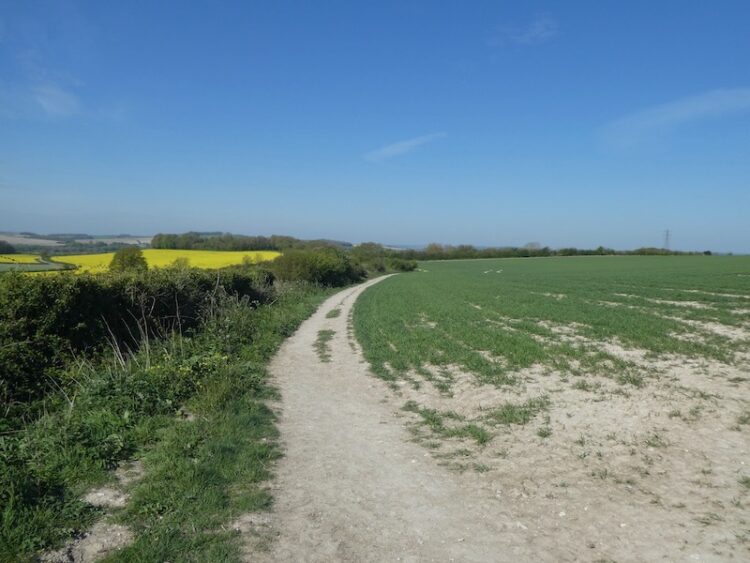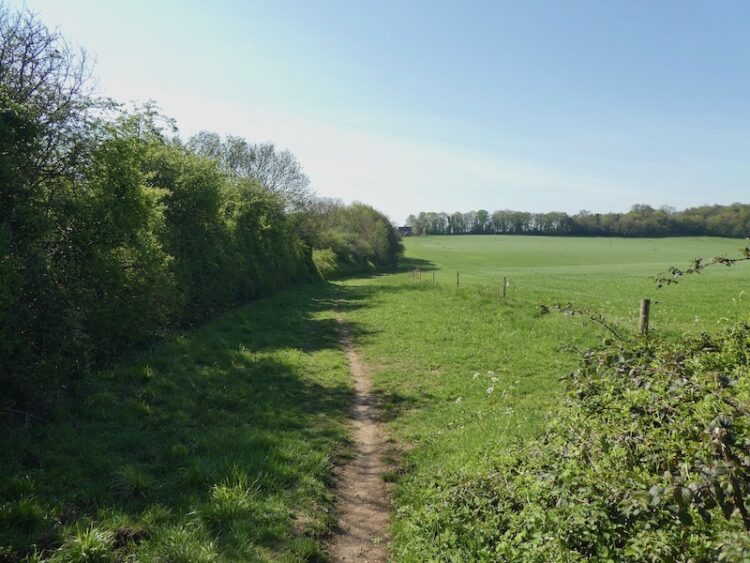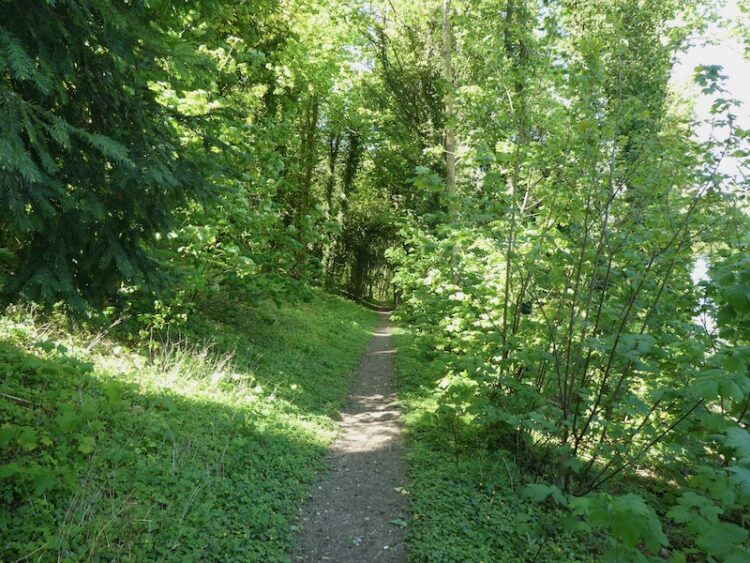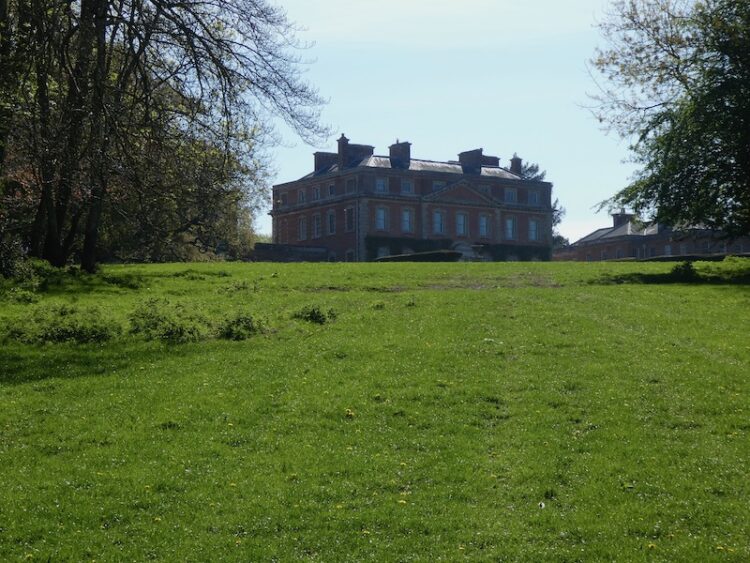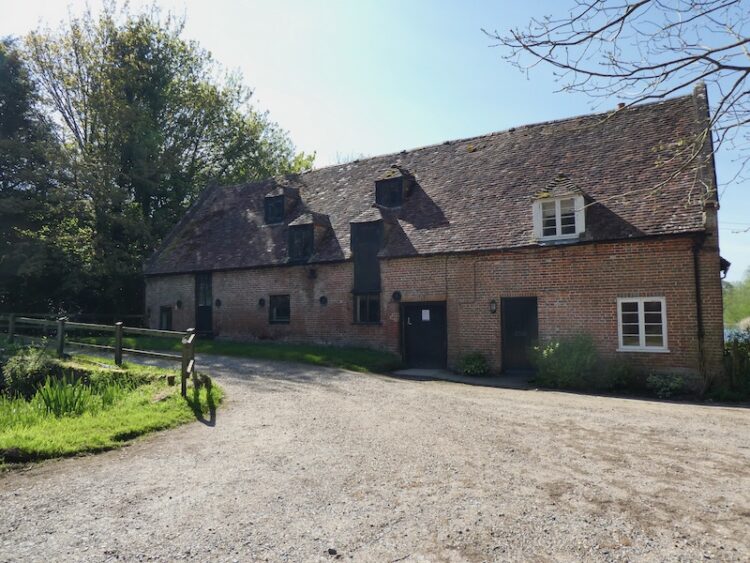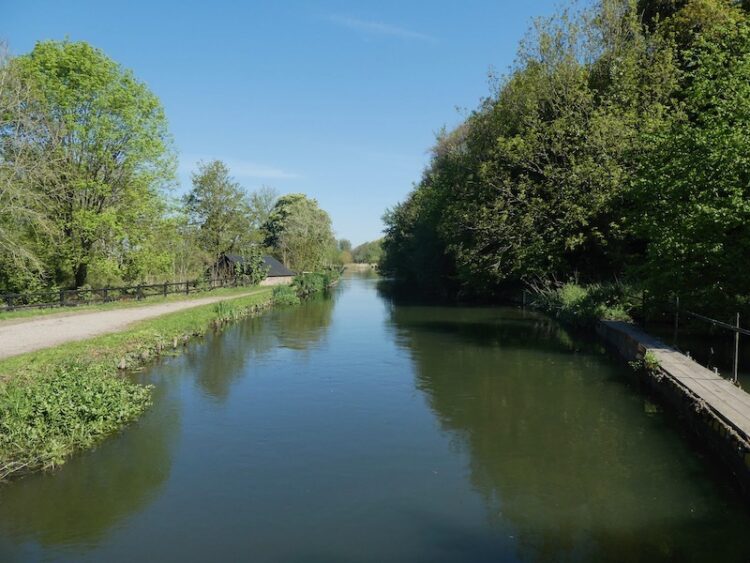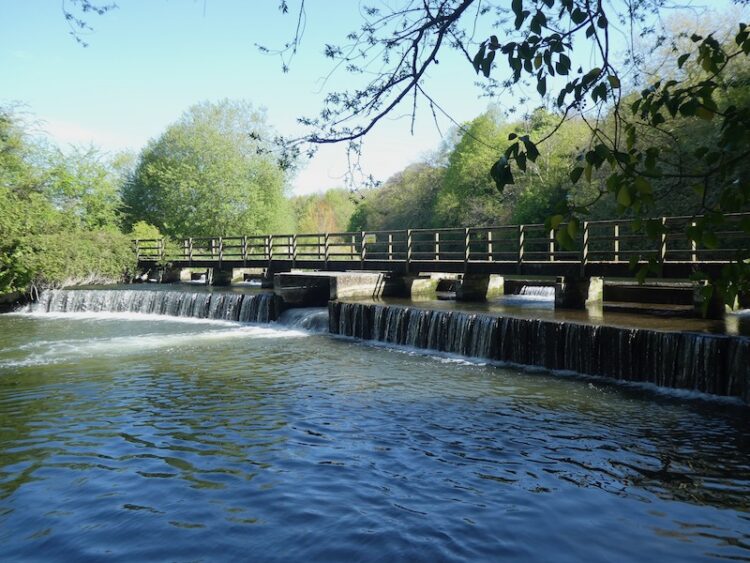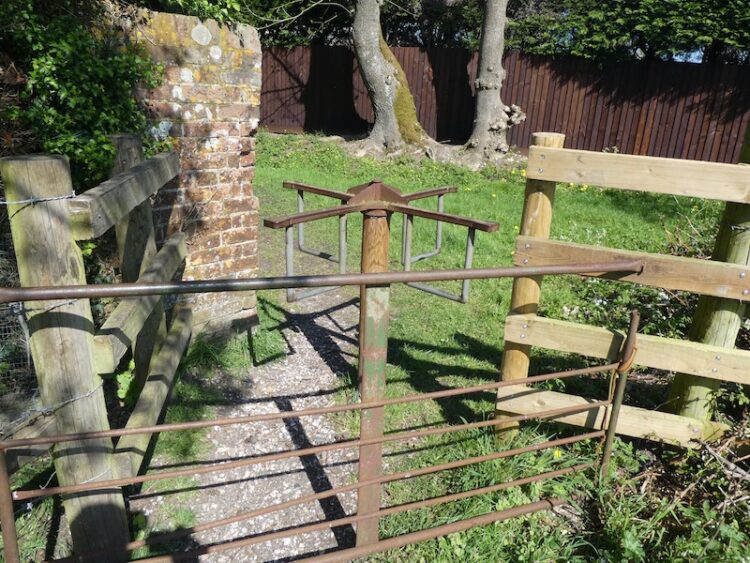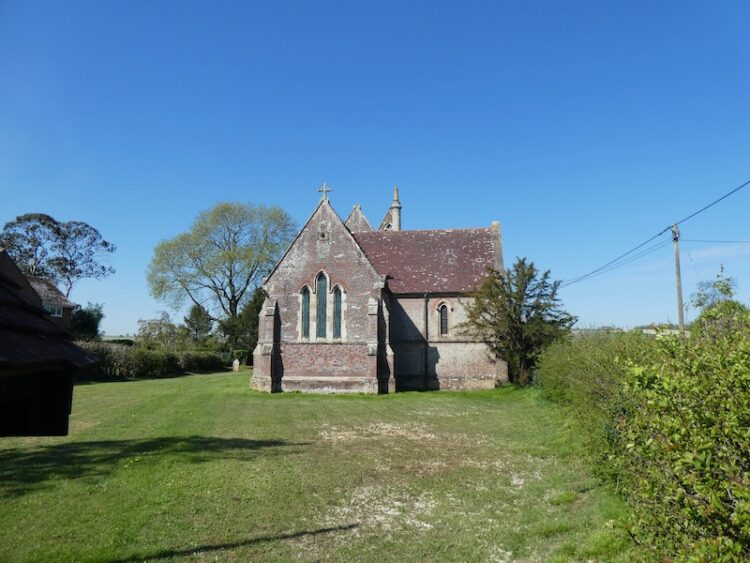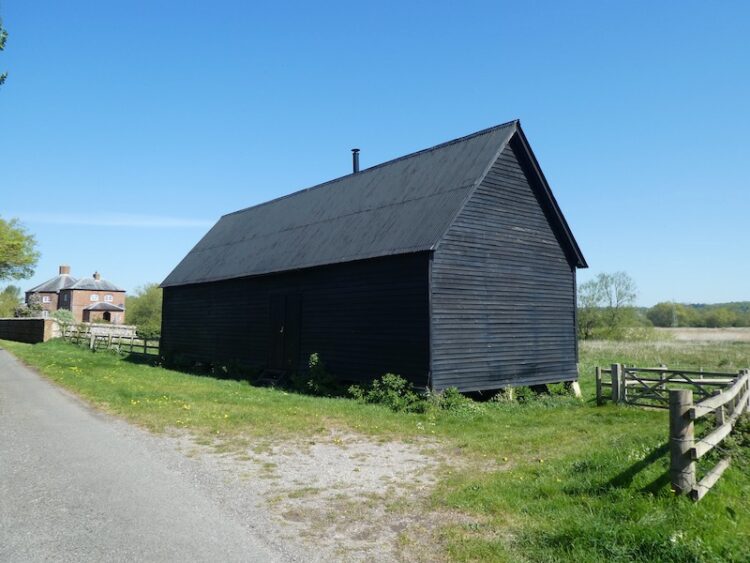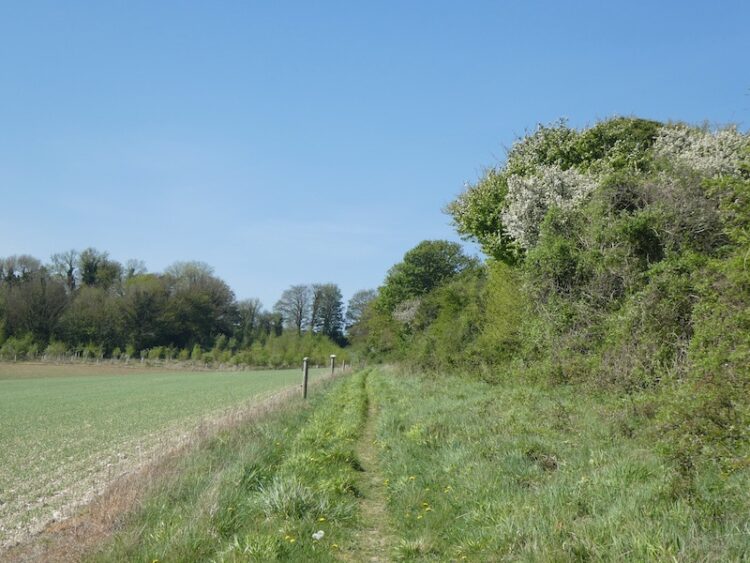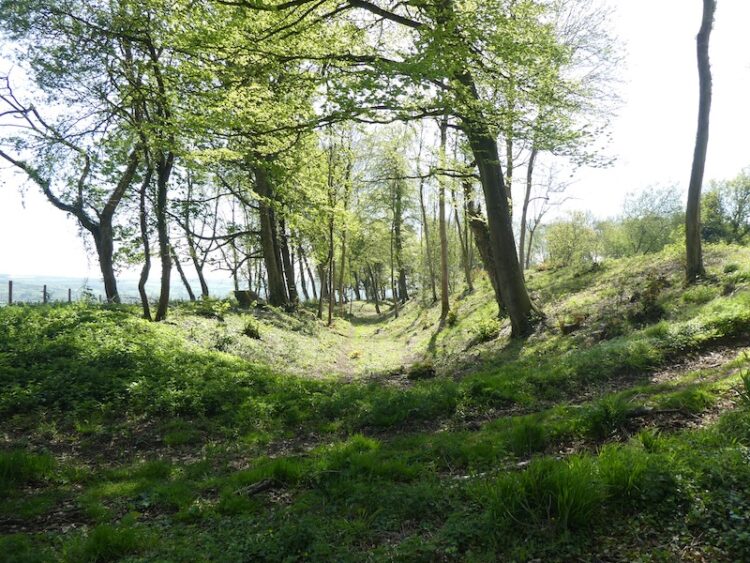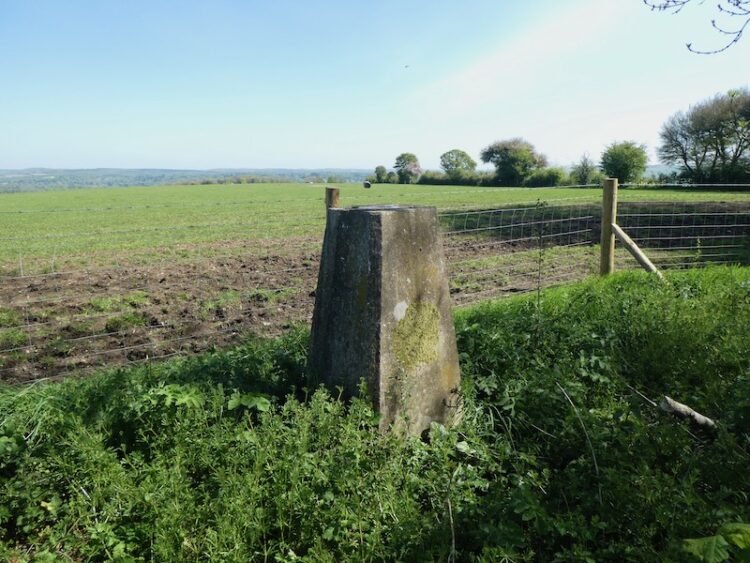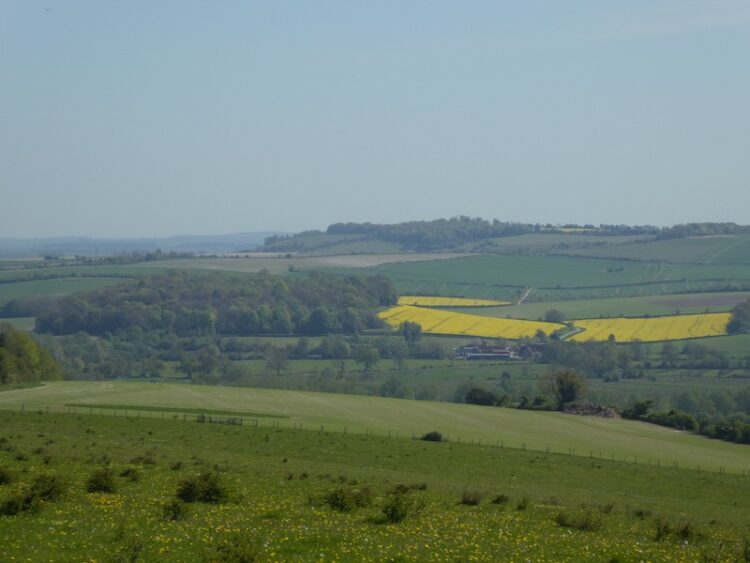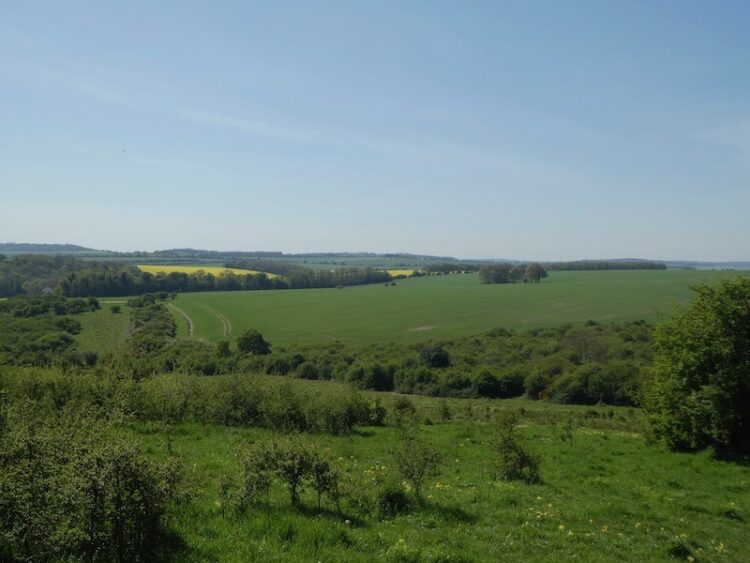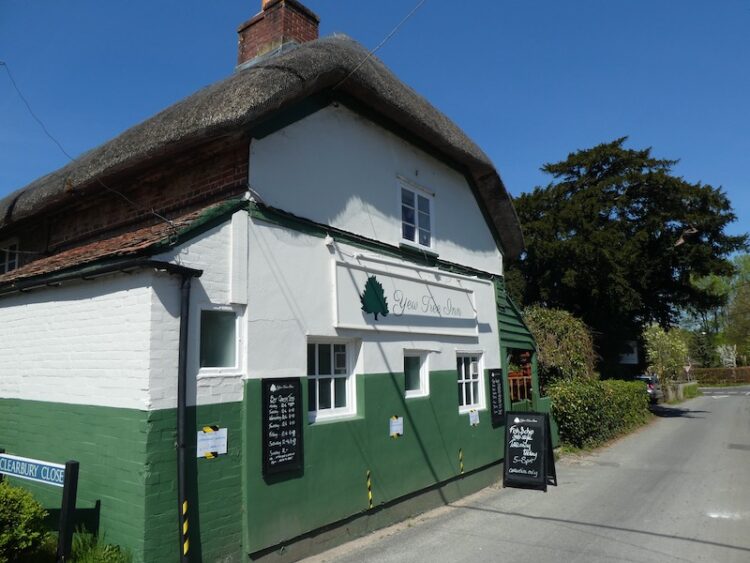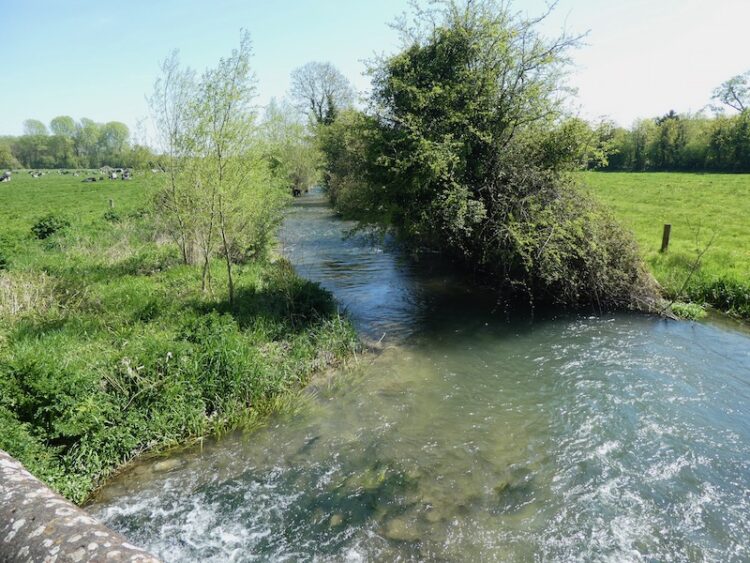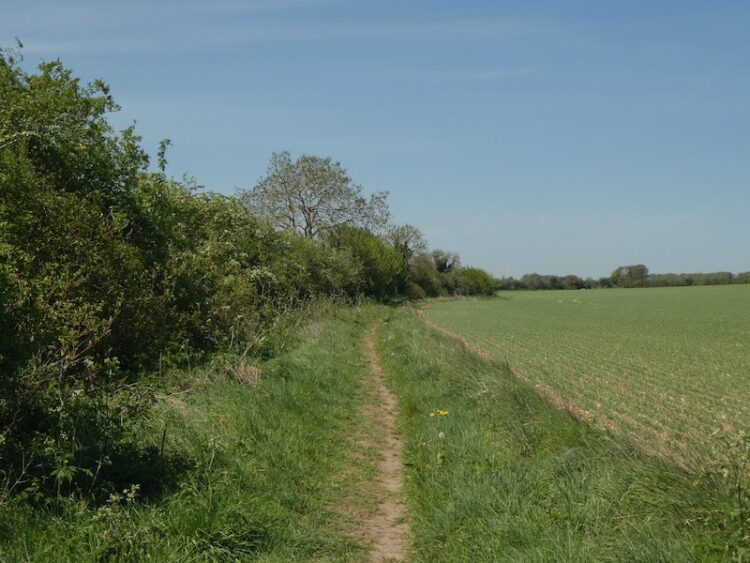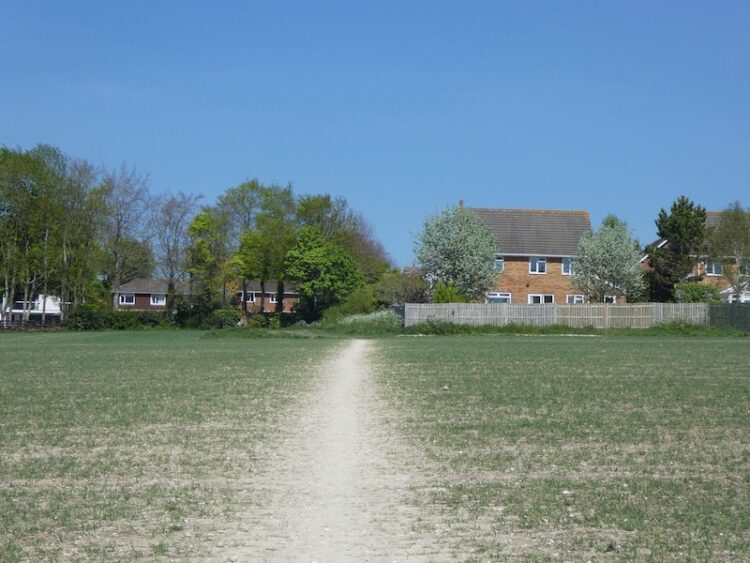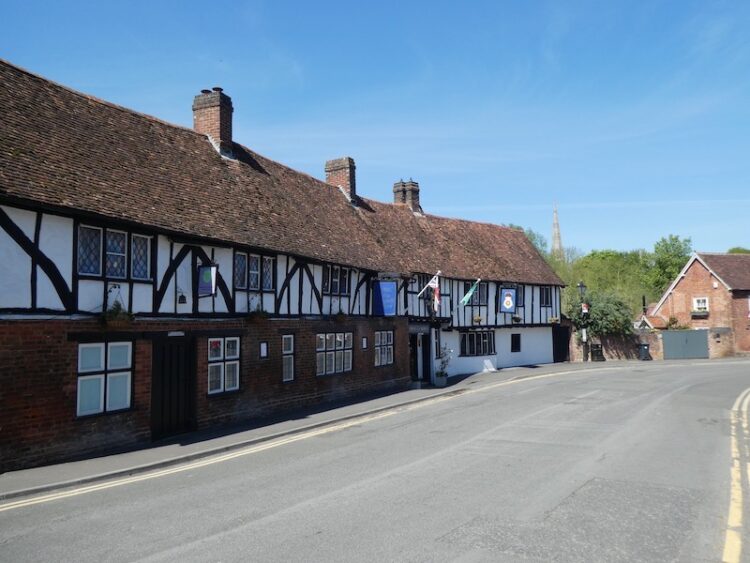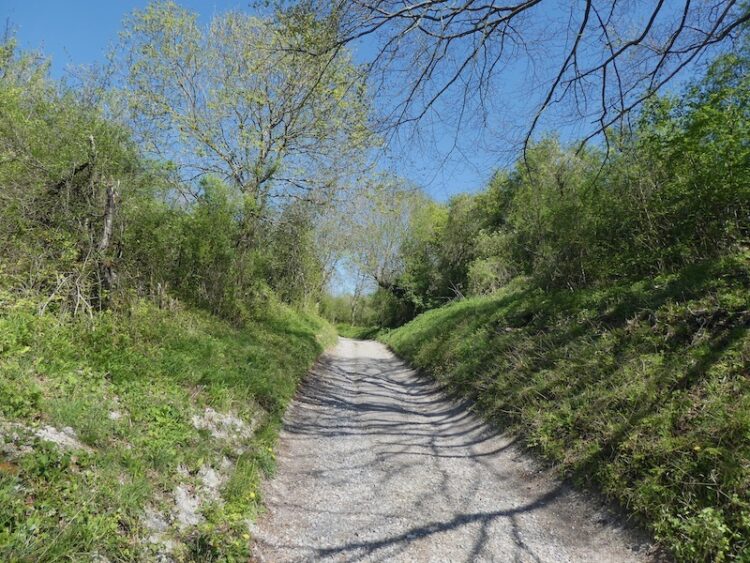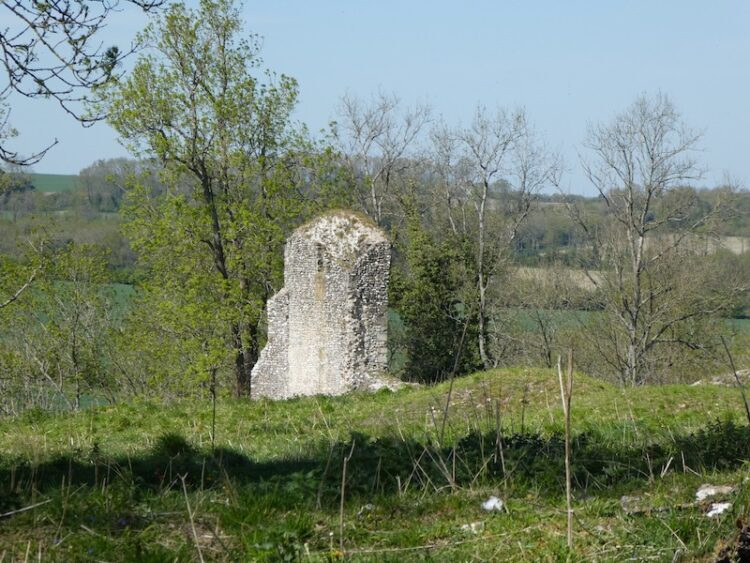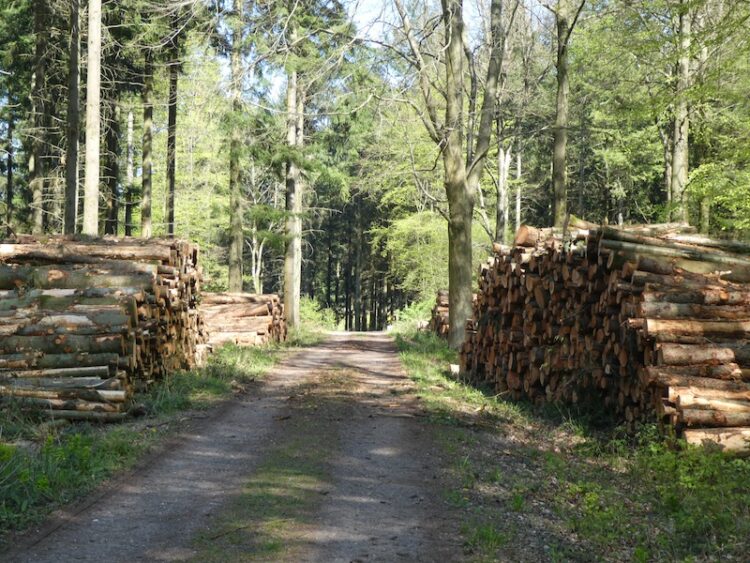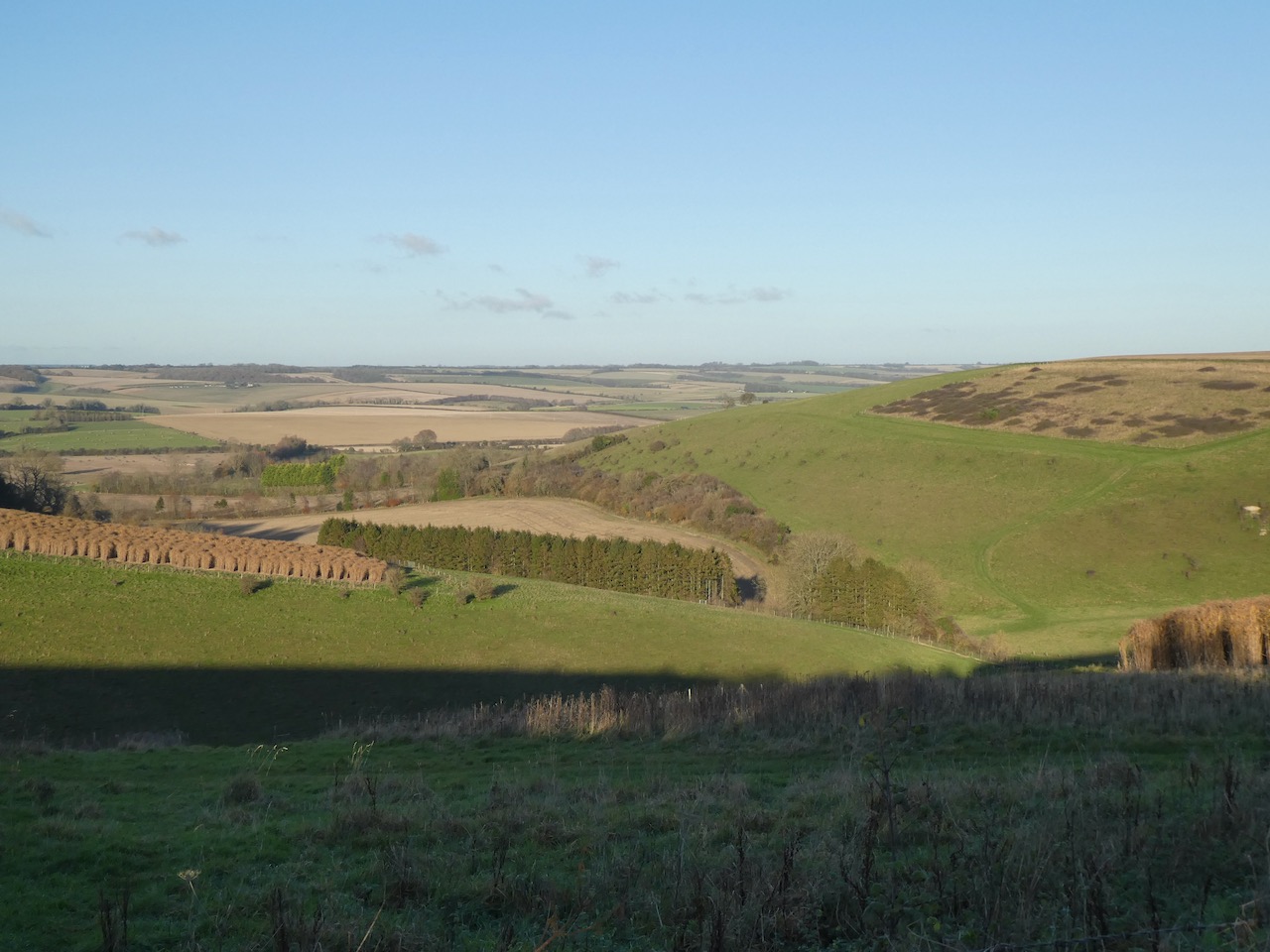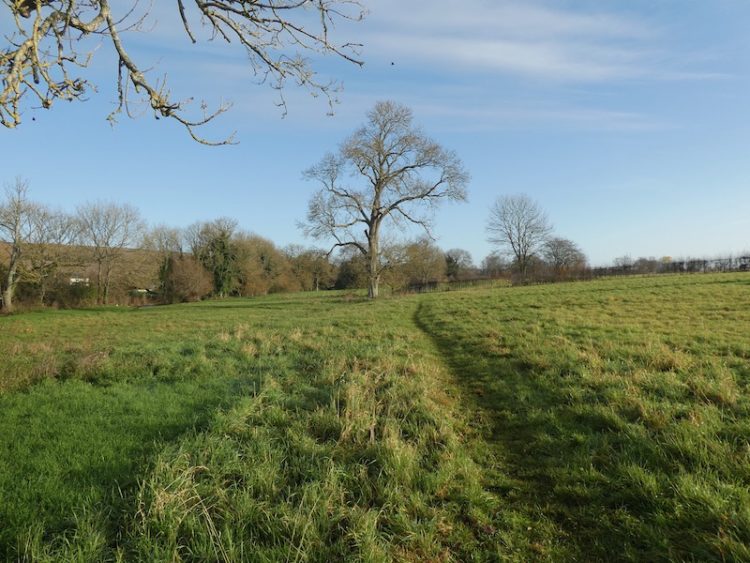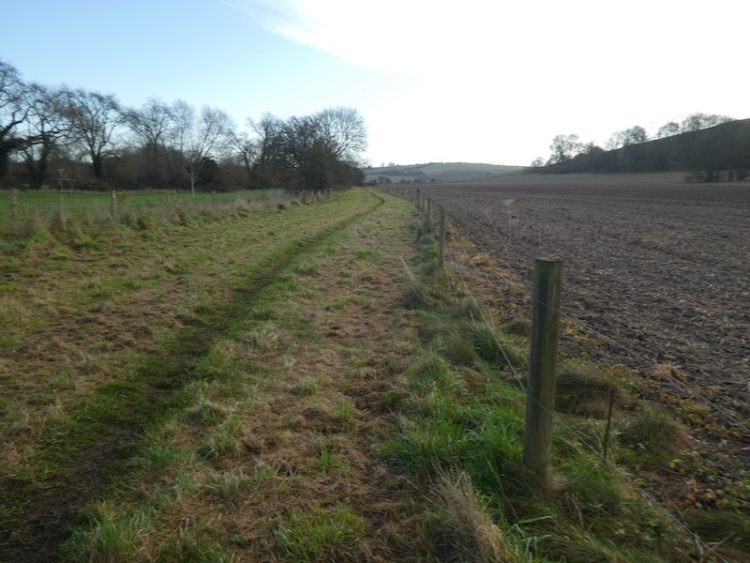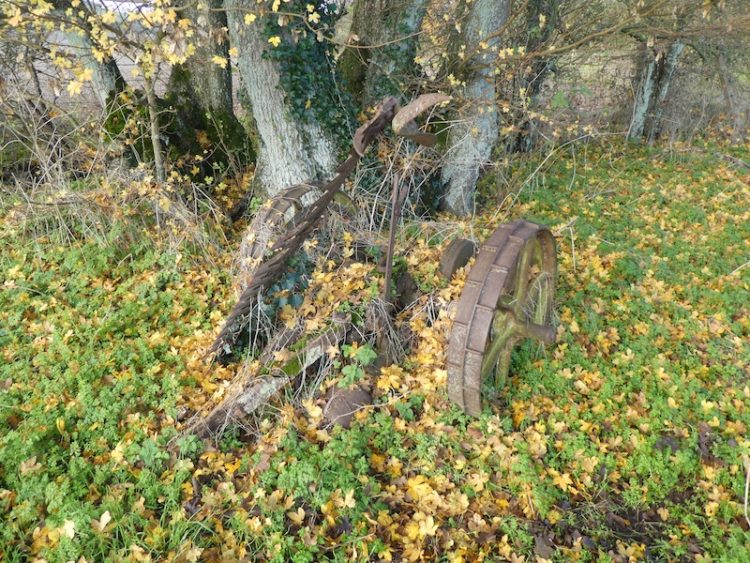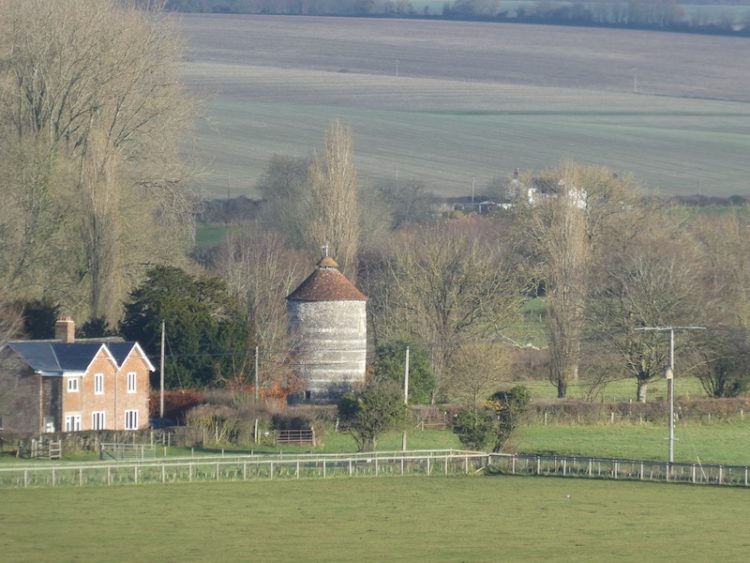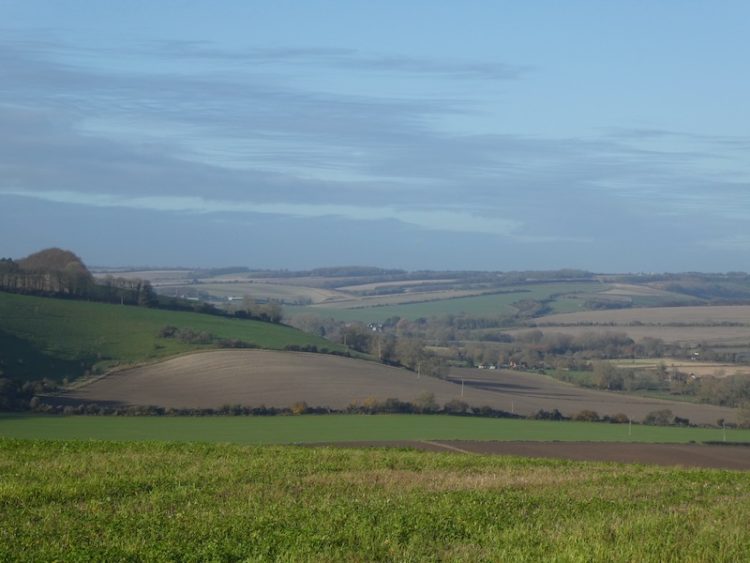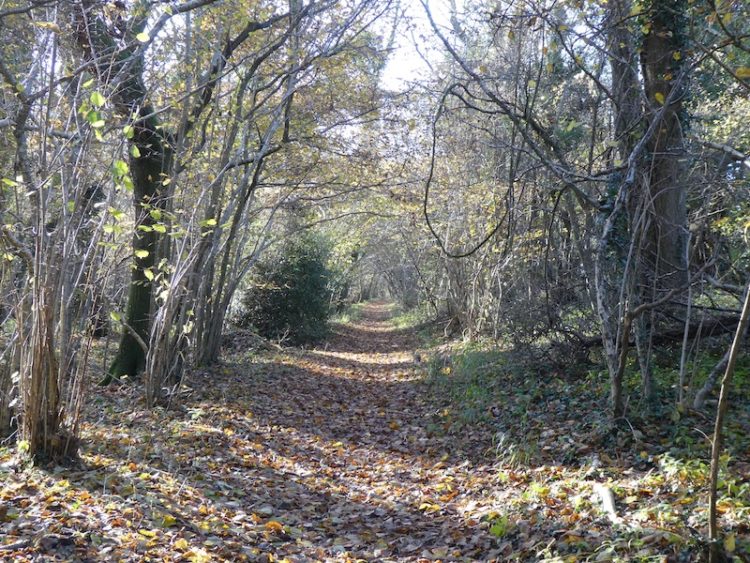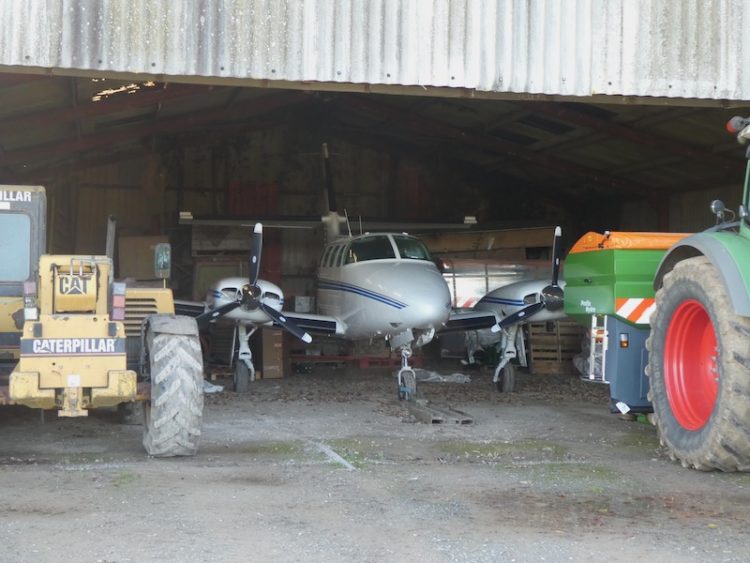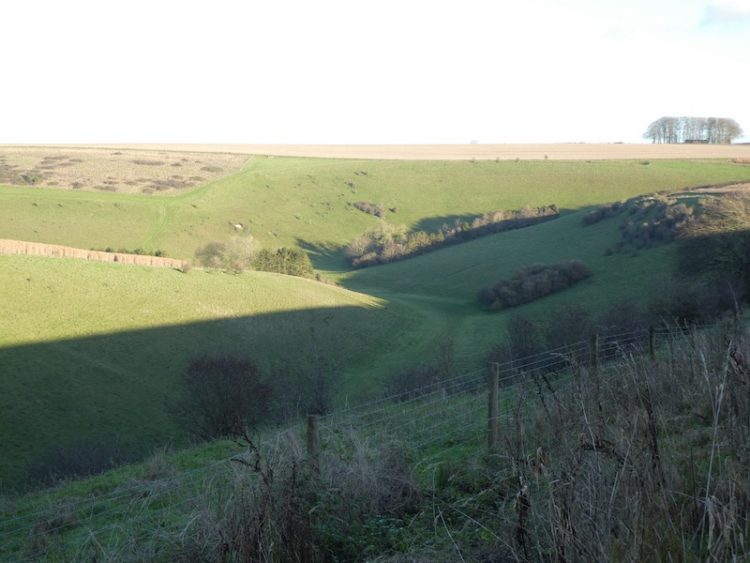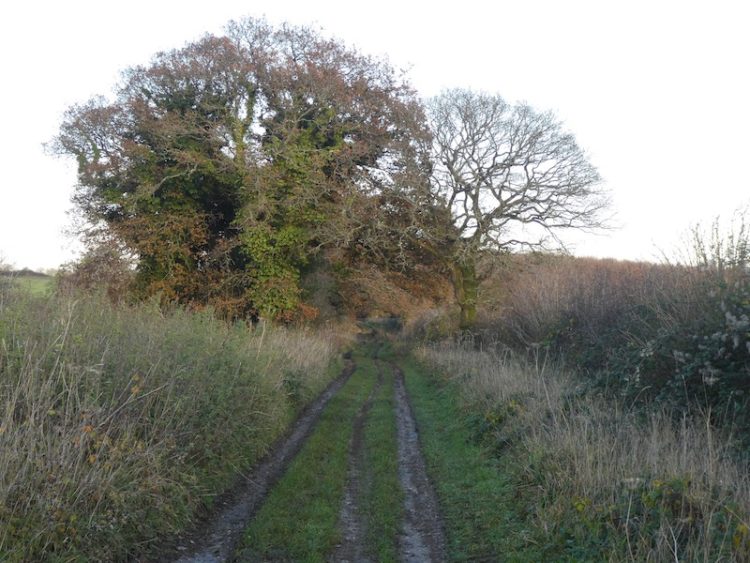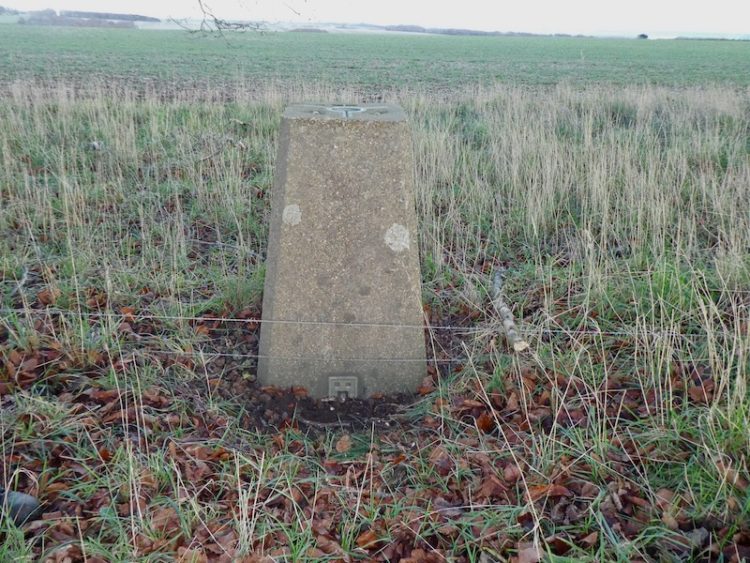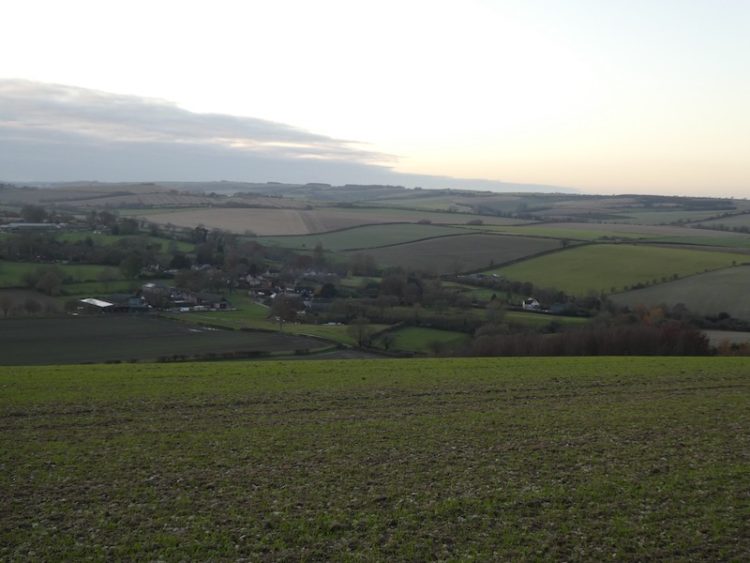I continue to look for new locations to walk whilst staying close to home. Until now I have coped better than I anticipated with not getting away in the caravan, but I still need some variation in my walking. For the past year I have been exploring the Cranborne Chase and today’s walk will start on Martin Down and visit villages to the east of the A354.
I have travelled along the A354 numerous times but never stopped at Martin Down, there is a large parking area on the edge of the nature reserve and I observe the signs asking people to leave plenty of space between vehicles as part of the social distancing.
I start my walk from the southern end of the car park and head out passing a metal barrier besides some information boards. Initially the path heads through shrub, but then opens out on to the vast expanse of the nature reserve, there are over 850 acres of protected land here which provide a haven for flora and fauna.

I follow the track towards the dominant rifle range butt in front of me. This area was used as a military rifle range up until the 1950’s and strewn across this area of the downs remains evidence.

Before reaching the butt I take a path on the right to head across the Bokerley Dyke. This ditch is thought to have been built during the iron age and fortified in the 5th century. It runs for around 3.5 miles and is an impressive structure.
At the dyke I pass through to reach the fence-line of a field. I enter the field and take a footpath on the right and continue along the edge of the field with the fence to my right. The path follows around the edge of the field and I am soon heading south with a hedge line to my right.

At a junction of paths I continue straight on to reach a gate besides a crossing of paths. Here I continue along a tree lined path still heading south towards Pentridge.

As the path reaches farm buildings it becomes a tarmac lane and I stay with this to walk into the village. I cannot ever recall visiting this village. It is a quiet spot well away from the main road and has some attractive old properties.

My route continues south through the village and passes Manor Farm to join a farm track. At a junction of paths I turn right and follow a track that soon heads uphill along the edge of a field. The path crosses the next field and shows clearly through the crops. At a fork in the path I keep left to head towards the edge of Salisbury Planation.

I ignore paths to the left and right as I follow the path along the edge of the woods to reach the course of the old Roman Road, the Ackling Dyke. Here I turn left and follow the route of the Roman Road.

After crossing a stile there is an impressive array of tumuli in the next field. I have passed these when driving along the A354, but at 60mph it is difficult to fully appreciate them.

Now I stay with the Roman Road as it gradually ascends to reach the B3081. After crossing the road I go through a gate and follow a path running besides the overgrown Roman Road.

The route now descends steadily with fine views in front of me. After crossing a farm track the route enters trees that form the edge of the Drive Planation and continues on to reach a minor road.
After crossing the road the route continues uphill through the edge of woodland. The Ackling Dyke covers 22 miles and connected the Roman settlements at Old Sarum on the edge of Salisbury and the Hillfort at Badbury Ring.

At a crossing of paths at Harley Gap I turn right. On this junction of paths is a memorial stone to a John Ironmonger (1919-1986) apparently he was the Manager for Lord Shaftesbury’s St Giles Estate.

I am now walking along the edge of a field with far ranging views. This is stunning countryside.

At a junction of paths I turn left to follow a drove along the top of Gussage Hill. Nearing the hedge line on the left I pop over the fence to bag the OS Trig that stands between fields. This is the 205th OS trig pillar I have bagged.

Back on the track I continue in a southwesterly direction, the track soon starts to descend and then turns left near a barn and after a couple of hundred yards turns right and continues steadily downhill too reach Lower Farm on the edge of Gussage St Michael. Here the track becomes a tarmac road and leads into the village passing AG Edwards & Sons Hardware store and continuing to a junction opposite St Michael’s Church, said to have a tower dating back to the12th century.

I turn left and walk out of the village on the country lane heading towards Gussage All Saints. This is a very quiet lane and only one vehicle passes me. As I reach Gussage All Saints I turn left and cross a stream to reach the War Memorial.

I continue a bit further along the lane to visit the All Saints Church most of which was built in the 14th century.

After visiting the church I return to the war memorial and head east through the village passing the village hall and then reach the Drovers Inn. This pub was shut in November 2014 and there were proposals to develop it into a large house. However the local community opposed this plan and set about establishing a Community Benefit Society to take control of the pub. In March 2016 they managed to purchase the property and now it is run as a community pub. I am a firm believer in community assets being owned and run but the local community, it does take a lot of effort to get established and there needs to be financial support from the community, but if successful it creates a hub for village activities. I would sooner drink in a pub run by the community than one owned by a chain. This is one reason why you will never see me in a J D Wetherspoon pub.

I continue on the lane, having made a note to make sure I return to the Drovers when the current pandemic is over. The lane reaches a crossroads at Amen Corner, here I continue straight over towards Bowerswaine.

Just before reaching a bridge over a stream I take a footpath on the left, Brockington Lane, which leads northeasterly towards Brockington Farm.

At a minor road in front of Brockington Farm farmyard I turn left. The farm buildings appear to be disused. I find it sad that stunning old barns, such as these are no longer used as originally intended, they would once have been the busy hub of a thriving farm.

As the road bends to the left I take a path which follows a track towards Farringdon Copse. After passing through a small copse the path continues across a field and then reaches a stile besides a minor road.
I turn right and follow this road into Wimborne St Giles. Entering the village I cross the River Allen and continue into the centre. This is a cracking spot with St Giles church prominent besides a stunning row of almshouses.

The Almshouses date back to around 1624 and were endowed by Sir Anthony Ashley (1551-1628). Ashley was Clerk to the Privy Council and apparently found favour with Queen Elizabeth I, it is reported that he was distinguished in the Battle of Cadiz in 1596 and was knighted soon after.

St Giles Church was constructed in 1732 on the site of an earlier medieval church. It was designed by the Bastard Brothers, who were architects from Blandford. When I first left school and worked in an office there was an old boy called George working there, now long dead. George had in-laws in Blandford and he would say on a daily basis that Blandford was built by Bastards and so were the folk that lived there. However, I have always found people from that attractive Dorset town very personable.
The church suffered a major fire in the early 1900’s and was rebuilt to the design of Sir John Cowper. It is a fine building, but currently closed to the public.

I sit on the bench by the church to eat my lunch and then head back through the village passing the school and turning right to take a lane that runs through the village passing attractive cottages.

At a road junction I turn right and walk past the Manor House and head north along a minor road. I have now joined the Hardy Way. This 220 mile route links parts of Wessex connected with Thomas Hardy. I have walked a number of sections but not previously trod this part. My friend, Stuart, is a devotee of Hardy’s work and has encouraged me to embrace his writing. A few years ago I tried with Tess of the d’Urbervilles but after reading the Maiden chapters could take no more. Perhaps I should try again!

At a track on the right I leave the minor road for a footpath along Ringwood Lane, still on the Hardy Way I keep with the trail way markers as it turns left to head north and then right to go besides a field heading towards the B3081.
I have driven along the B3081 many times and know the section I am heading towards, so I am pleased when the path runs on the field side of the hedge rather than the road side. Nearing Creech Hill House the path goes through a gap in the hedge and after crossing the road with care I continue heading east along a minor road towards Cranborne.
As the road bends to the right I stay with the Hardy Way and take a path on the left. This heads across fields to reach a common where I cross a stream and continue towards the village.
I have never visited this village, in the days of King Henry VIII when the Cranborne Chase was a Royal hunting ground this was a major centre. Henry built a hunting lodge in the village. The church of St Mary and St Bartholomew was built in the 12th century and over following centuries additions were made, the tower was added in the 15th century and the chancel rebuilt in the 19th century.

After visiting the church I leave the village along Salisbury Street, at a fork in the road I take a tarmac lane signed posted “Bridleway to Pentridge”. This lane heads steadily uphill, passing houses to reach a gate across the track. I pass besides the gate and continue along the bridleway.

I stay with the main bridleway ignoring paths to the left and right as I head towards Pentridge Hill. The views either side of the track are stunning.

At a gate besides a junction of paths I go through and keep to the path continuing up to the summit of Pentridge Hill with a fence to the right. I go through another gate and continue to the trees on Penbury Knoll which top Pentridge Hill. I stay on the path close to the fence and then take a short detour to visit the Ordnance Survey trig pillar in the trees, my 206th trig.

This is my first time on this hill, it is a cracking place with ancient field systems and outstanding views.

At a fork in the track I leave the Hardy Way and follow a grassy path that heads steadily downhill towards Whitey Top Farm. After crossing a stile I join a footpath heading north besides the edge of an arable field. I have joined the Jubilee Trail, an 90 mile path crossing Dorset from Forde Abbey near the Somerset border to the Bokerley Dyke. I go through a gate and then continue along the edge of a copse to reach Martin Down at Bokerley Ditch.

On the downs I turn left and walk besides the stunning Bokerley Ditch.

The path is easy to follow and I stay by the ditch until I reach the rifle range butt where I retrace my steps to the car park. My walk has covered just over twenty miles and has been stunning throughout. It will not be too long before I am walking around in this area again.
To follow my walk, you will need Ordnance Survey Explorer Map 118 – Shaftesbury and Cranbourne Chase
You can view this 20 mile walk on OS Maps and download the GPX File Here
Additional Information
For more information on this walk including car parking, amenities, refreshments and detailed walking directions visit my associated Walking Moonraker website.
29th May 2020
© Two Dogs and an Awning (2020)
All information on this site is provided free of charge and in good faith and no liability is accepted in respect of damage, loss or injury which might result from it. To the best of my knowledge the routes are entirely on public rights of way or within areas that are open for public access.
Walking can be hazardous and is done entirely at your own risk. It is your responsibility to check your route and navigate using a map and compass.

